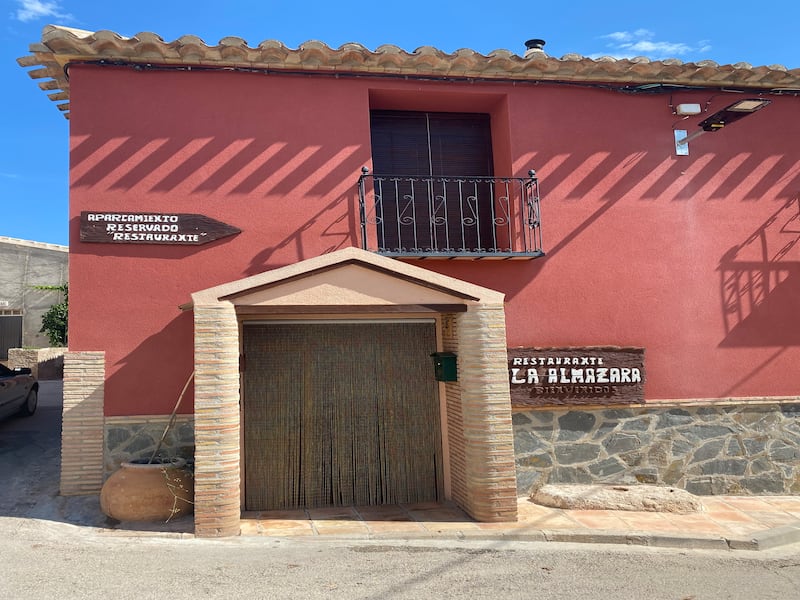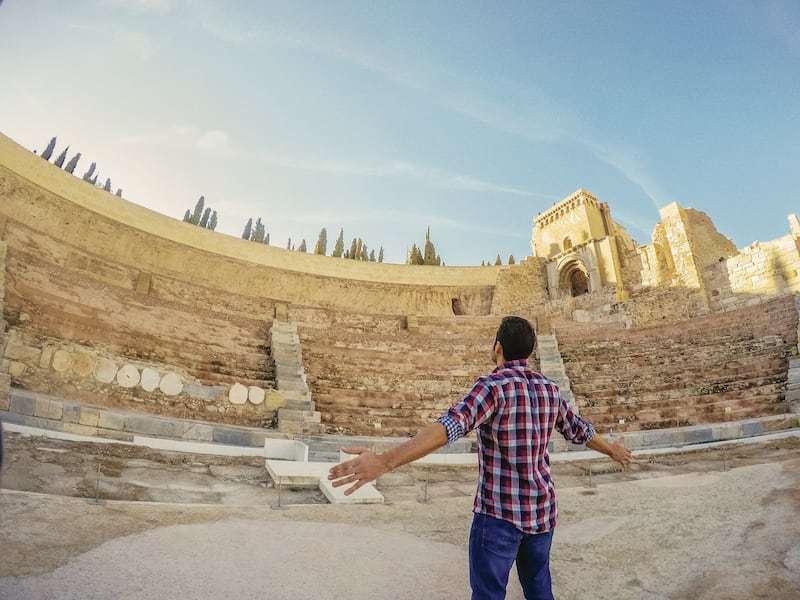Mention culture and gastronomy in Spain, and people immediately think of Barcelona, Madrid and San Sebastián, but quietly cosseted below that radar is Murcia, a city where streets shaded with lemon trees connect gracious squares fringed with restaurants. Founded by the Emir of Córdoba, Abd ar-Rahman II, in 825, its beauty and gentleness will seduce you. This is not a hotspot overrun by tourists, but has the quiet air of a city that is kept real by its locals, who take life at a congenial pace in this southeast corner of the country.
La Plata de las Flores, inside the old Moorish quarters, was historically known as the butchers’ district, an area where the flower sellers of the city set up their stalls around the butchers’ market. In the 1600s, the butchers ceased trading there but the flower sellers remained.
Today, you will still find flower stalls around the fountain with its La niña de la flores bronze sculpture, and really, the only thing to do is go all Murciano and stop for a coffee during the day at one of the many outdoor terraces, enjoy some paparajotes, the Murcian speciality of lemon leaves fried in batter, or a vínico with some tapas in the evening.
Just 400m from the square is the Cathedral Church of St Mary, an imposing structure built on the site of a mosque. Elements of Gothic, Renaissance and Baroque architecture reflect the legacy of a 300-year build. Nothing happens at a fast pace in Murcia, and there is certainly time for chocolate and churros at Chocolate valour on Plaza del Cardenal Belluga overlooking the cathedral.
Web Summit case: Three angry men finally settle their differences
Moving to another country is hard. You’re not failing if you’re not living up to a filtered social media standard
Trump proves topical at tropical gathering on Chinese island
As the FAI and League of Ireland clubs squabble, our talented young players are moulded into professionals abroad

Head into the El Real Casino de Murcia on calle Trapería to see the sheer opulence of this restored building before taking a stroll along by the river Segura, passing the handsome Episcopal Palace to reach the Mercado de Veronicas. Every sizeable city in Spain has a municipal market and in Murcia, which is known as the vegetable garden of Europe, it is particularly impressive.
Market treats
On the ground floor, the stalls are piled high with artichokes, peppers, tomatoes and produce that is grown in La Huerta, the irrigated farmland that surrounds the city.
Downstairs is a glorious display of fish, meat and offal. Murcia has its own breed of pigs, Chato Murciano, as well as its own lamb, Cordero Segureño, which you’ll find for sale, along with rabbit, hare and pigs trotters. Locally caught mullet, gilthead bream and langoustines can be found on the many fish stalls.
Across the street is La Lechera de Burdeos, an impressive cheese shop named after the Goya painting The Milkmaid of Bordeaux. It is perhaps, an indication of where Murcia sees itself now in terms of gastronomy. There has been an explosion of artisan cheesemakers in the past 10 years, and two of the local cheeses, made from Murcia-Granada goats’ milk, have EU-protected, designation-of-origin status. With notice (check for events by messaging their Facebook page), it is possible to do a cheese tasting here with matching wines.
Also worth exploring for local food is the Mercado de Correos, the old central post office nearby, a seriously swanky food hall, bar and restaurant, where you can try traditional bites like pastel Murciano (meat pies in a swirl of puff pastry), empanadas and morcilla, or more substantial local dishes.
For a fine dining take on Murcian produce, Odiseo Gastronómico, which was awarded a Michelin star just nine months after opening, is one of two restaurants in the Odysseus building, a 15,000-square-metre complex designed by Manuel Clavel that looks like it’s been airlifted from Dubai. It includes a casino, disco, outdoor terraces and the largest cantilevered swimming pool in Europe. Dropping in here for even a drink and a snack would require a serious wardrobe change.
Gastronomic scale
Climbing further up the gastronomic scale is Cabaña Buena Vista, a two-Michelin-star restaurant 10km out of town in the verdant countryside. Murcian chef Pablo González strings more than 20 small courses together, using local produce, to take diners on a four-hour journey through historical civilisations. If a €120 tasting menu is your thing, prepare to be dazzled. Delicious small bites emerge from dry ice and liquid nitrogen, a savoury rice custard is served in a chilled gold goblet, prawns are cooked at the table with a formidable iron and pressed to extract their juices, and a pint of goats’ milk is turned into cheese before the diner’s eyes. Desserts are served from a pyramid, and a large wooden trunk with an elaborate kit that looks like it came from a chemistry lab is wheeled tableside to brew coffee. It is a complete night out.
Hiring a car makes sense to explore the region further. Some 50km to the west of Murcia is the wine region of Bullas, where you’ll find the Museo del Vino, built over a 19th-century winery. Old earthenware wine pots are still in place, sunk 5m into the ground.
A wine tasting at Bodegas Lavia, an organic winery just down the road, offers a good opportunity to learn about the local Monastrell grape. It may not be as familiar as the more widely grown Tempranillo variety, but this small, thick-skinned grape is receiving considerable attention in the wine world due to its ability to deal with periods of drought, making it well-suited to the vagaries of climate change.

Nearby in Cehegin, the Almazara restaurant is a charming stop for lunch. Here, among the local specialities, shoulder of lamb is cooked in a wood-burning oven. From there, it’s a short drive to Calasparra, a beautiful mountainous area of flood lands where the region’s famous bomba rice is grown. The town of Calasparra is unspoilt by tourism, and an evening meal in Bar Cantero, trying various arroz dishes in a room filled with locals, will round off your day nicely.
No trip to Murcia is complete without a visit to Cartagena, the strategically located port city founded by the Carthaginians of North Africa in 227BC. The Roman Theatre, which was rediscovered in 1988 when the area was being excavated, is quite spectacular, with a sweeping arc of 88m. There is plenty to see on the marble-tiled streets of the city, but a port town always demands a stroll by the waterside. To take in the full view of the bay, an outdoor table at seafood restaurant Eszencia is where you want to be and, as the sun shines 300 days of the year in Murcia, it’s unlikely that you’ll need to pack an umbrella.
Corinna Hardgrave was a guest of ITREM, Instituto de Turismo Region de Murcia














